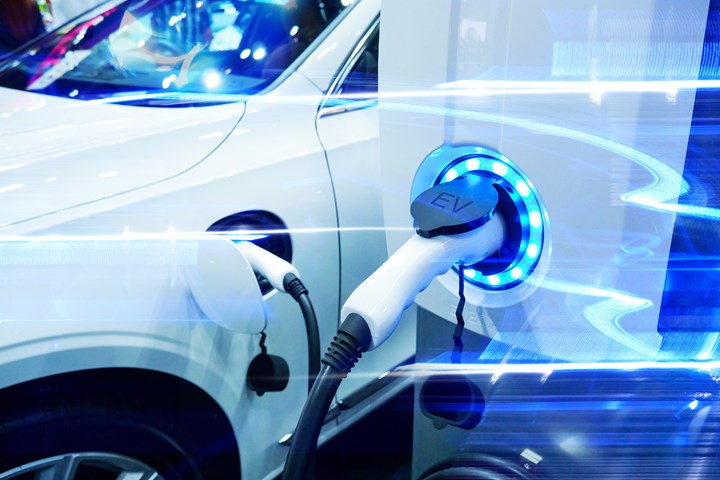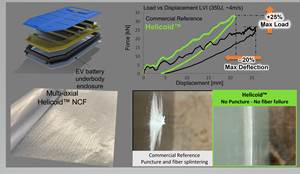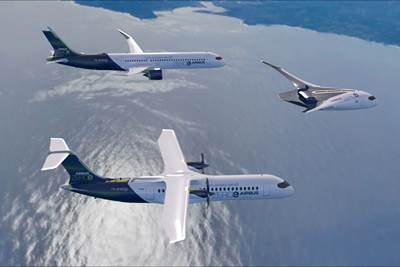Californian executive order requires all zero-emission vehicles by 2035
The mandate could achieve more than a 35% reduction in greenhouse gas emissions and an 80% improvement in oxides of nitrogen emissions by 2035.

Photo Credit: Getty Images
Governor Gavin Newsom announced on Sept. 23 that he will aggressively move the state of California further away from its reliance on climate change-causing fossil fuels while retaining and creating jobs and spurring economic growth via an issued executive order. The order requires sales of all new passenger vehicles to be zero-emission by 2035 and additional measures to eliminate harmful emissions from the transportation sector.
It is said that the transportation sector is responsible for more than half of all of California’s carbon pollution, 80% of smog-forming pollution and 95% of toxic diesel emissions.
“This is the most impactful step our state can take to fight climate change,” says Governor Newsom. “For too many decades, we have allowed cars to pollute the air that our children and families breathe. Californians shouldn’t have to worry if our cars are giving our kids asthma. Our cars shouldn’t make wildfires worse — and create more days filled with smoky air. Cars shouldn’t melt glaciers or raise sea levels threatening our cherished beaches and coastlines.”
Following the order, the California Air Resources Board will develop regulations to mandate that 100% of in-state sales of new passenger cars and trucks are zero-emission by 2035, a target which would achieve more than a 35% reduction in greenhouse gas emissions and an 80% improvement in oxides of nitrogen emissions from cars statewide. In addition, the Air Resources Board will develop regulations to mandate that all operations of medium- and heavy-duty vehicles shall be 100% zero emission by 2045 where feasible, with the mandate going into effect by 2035 for drayage trucks. To ensure needed infrastructure to support zero-emission vehicles, the order requires state agencies, in partnership with the private sector, to accelerate deployment of affordable fueling and charging options. It also requires support of new and used zero-emission vehicle markets to provide broad accessibility to zero-emission vehicles for all Californians. The executive order will not prevent Californians from owning gasoline-powered cars or selling them on the used car market.
The governor notes that California will be leading the nation in this effort, joining 15 countries that have already committed to phase out gasoline-powered cars and using our market power to push zero-emission vehicle innovation and drive down costs for everyone.
By the time the new rule goes into effect, it is said zero-emission vehicles will be cheaper and better than the traditional fossil fuel-powered cars. The upfront cost of electric vehicles are projected to reach parity with conventional vehicles in just a matter of years, and the cost of owning the car — both in maintenance and how much it costs to power the car mile for mile — will be less than a fossil fuel-burning vehicle.
The executive order sets clear deliverables for new health and safety regulations that protect workers and communities from the impacts of oil extraction. It supports companies that transition upstream and downstream oil production operations to cleaner alternatives. It also directs the state to make sure taxpayers are not stuck with the bill to safely close and remediate former oil fields. To protect the health and safety of communities and workers, the Governor is also asking the Legislature to end the issuance of new hydraulic fracturing permits by 2024.
The executive order directs state agencies to develop strategies for an integrated, statewide rail and transit network, and incorporate safe and accessible infrastructure into projects to support bicycle and pedestrian options, particularly in low-income and disadvantaged communities.
The text of the executive order can be found here.
This action continues the Governor’s commitment to strengthening California’s resilience while lowering carbon emissions. In the last six months, the California Air Resources Board has approved new regulations requiring truck manufacturers to transition to electric zero-emission trucks beginning in 2024 and the Governor signed an memorandum of understanding (MOU) with 14 other states to advance and accelerate the market for electric medium- and heavy-duty vehicles.
Related Content
Helicoid Industries releases three use cases of Helicoid technology
Use case applications with Helicoid technology implementation demonstrated mechanical performance improvements, such as impact resistance and strength.
Read MoreAptera reveals first composite production parts for BinC vehicle
Pre-production efforts are underway to begin building production-intent vehicles.
Read MoreAptera joins forces with C.P.C. Group to accelerate solar EV production
Specialized composite bodies are being produced in Modena, Italy, for Aptera’s BinC vehicle, enabling eventual manufacturing ramp-up of 40 vehicles/day to meet demand targets.
Read MoreProtecting EV motors more efficiently
Motors for electric vehicles are expected to benefit from Trelleborg’s thermoplastic composite rotor sleeve design, which advances materials and processes to produce a lightweight, energy-efficient component.
Read MoreRead Next
Plastic Omnium supplies composite hydrogen storage tanks for MissionH24 cars
Plastic Omnium’s Type IV overwrapped carbon fiber tanks will be subjected to highly demanding operating conditions in terms of speed, refueling frequency and temperature.
Read MoreAirbus reveals new zero-emission concept aircraft
The three concepts — all codenamed ZEROe — each represent a different approach to achieving zero-emission flight. The aircraft could enter service by 2035.
Read MoreFrom the CW Archives: The tale of the thermoplastic cryotank
In 2006, guest columnist Bob Hartunian related the story of his efforts two decades prior, while at McDonnell Douglas, to develop a thermoplastic composite crytank for hydrogen storage. He learned a lot of lessons.
Read More

























